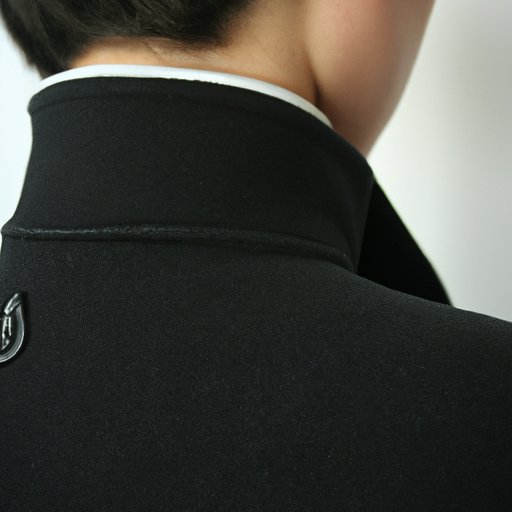Introduction
School uniforms are a common sight in many schools worldwide. Advocates of school uniforms often highlight that they promote a sense of unity and belonging among students and help to reduce social and economic inequalities. While these are important considerations, school uniforms may also have some negative effects on students. In this article, we explore why school uniforms are bad and examine their impact on students.
The Case Against School Uniforms: Why Individual Expression Should Matter in Schools
Individual expression is an important aspect of personal growth and development, particularly during the formative years of childhood and adolescence. School uniforms, however, can stifle individual expression and limit creativity. Students may not be able to express themselves through clothing, accessories, hairstyles, or makeup. This restriction can undermine a student’s sense of individuality, leading to feelings of conformity and a lack of self-expression.
Moreover, school uniforms are often rigid and bland, leaving little room for students to inspire creativity. The lack of creativity in student uniform designs can also lead to students feeling uninspired and disinterested in their school experience. This may ultimately result in a negative impact on academic performance and personal growth.
The Negative Effects of School Uniforms: How One Dress Code Fits All Can Harm Students
No two students are the same. Each has unique personalities, interests, and physical attributes. School uniforms, however, create a sense of sameness among students, which undermines their individuality and can lead to feelings of exclusion or othering. Students can feel like they are losing a sense of their identity, which can have a negative impact on their academic performance, social development, and psychological well-being.
For example, school uniforms may accentuate physical differences, leading to heightened self-consciousness among students. They may also create a culture of intolerance that is conducive to bullying and harassment. This can be particularly troubling for students who already feel marginalized due to other personal characteristics, such as race, religion, or socio-economic status.
Uncomfortable, Unaffordable, Unnecessary: The Drawbacks of School Uniforms
School uniforms, by their very nature, can be uncomfortable and impractical. They may be made of cheap materials that cause discomfort or irritation. Students may also find it difficult to move around or play sports comfortably, leading to health problems or a lack of physical activity.
Furthermore, uniforms can be an expensive proposition for many families. Parents may have to purchase multiple uniforms per year, which can be a significant financial burden. Students may also feel self-conscious if they cannot afford the latest or most stylish uniforms, leading to feelings of inferiority.
Breaking Down the Arguments Against School Uniforms: Are They Really Beneficial to Students?
Advocates of school uniforms often argue that they reduce bullying and improve safety in schools. However, research on the effectiveness of school uniforms in achieving these goals is mixed. Some studies suggest that school uniforms can lead to a reduction in bullying, while others show no impact at all.
Similarly, there is little evidence to suggest that school uniforms improve safety in schools. Critics argue that safety would be better served through other measures, such as better supervision, counseling, or security measures. These alternative solutions may also have the advantage of not stigmatizing or punishing students.
The Psychological Impact of School Uniforms: Why Forced Conformity is a Bad Idea
School uniforms can have a profound psychological impact on students. Forced conformity can lead to feelings of anxiety, depression, and other mental health issues. Students may feel like they are losing control of their own lives and are being forced to conform to a particular set of values or beliefs, regardless of whether they agree with them.
Moreover, the authoritarian nature of school uniforms can lead to feelings of resentment or rebellion among students, particularly those who already feel marginalized or disempowered in other aspects of their lives. This can ultimately undermine the positive goals of school uniforms, such as reducing bullying or improving safety.
An Examination of the Controversial Debate: Why School Uniforms May Actually Be a Hindrance to Learning
While there are some counterarguments to the idea that school uniforms are harmful, they may not be valid or applicable to all students. For example, some argue that school uniforms help to reduce distractions and improve student focus on academic work. However, students may also become disinterested and disconnected from their education if they feel that it is too restrictive or authoritarian.
In the end, the debate over school uniforms boils down to a question of personal freedom versus the needs of the collective. While school uniforms may help to promote a sense of unity and belonging, they ultimately represent an unnecessary restriction on personal freedom and an impediment to learning and growth.
Conclusion
In conclusion, school uniforms may not be as beneficial as they are often touted to be. While they may promote a sense of unity and belonging, they can also undermine individual expression, harm academic performance, exclude students, cause discomfort and financial burden, and contribute to mental health issues. Alternative solutions that address the underlying causes of these problems may be more effective in creating a positive school environment that promotes learning, growth, and personal freedom.
